Educational Attractions in Reykjavik
Explore Iceland’s rich cultural and natural heritage, artistry, and ingenuity
December 30, 2024
Educational Attractions in Reykjavik
Explore Iceland’s rich cultural and natural heritage, artistry, and ingenuity
December 30, 2024
If you’re travelling with children, using the word education when they aren’t in school can lead to vehement protests – that is, however, until they come to Iceland. Families keen to instil a lifelong love of subjects such as geography, science, history and culture should consider broadening their kids’ horizons here. In fact, no matter what your age, you’ll learn something here.
In this guide, we’ll take a look at the educational attractions on offer in Reykjavik that will enrich the understanding of children and adults alike. Along with practical tips on the best times to visit and suggestions for nearby dining options, we’ll show you how to book and offer advice about incorporating these educational experiences into a broader travel itinerary in Iceland. We can promise you: learning has never been so much fun – here’s why.
Reykjavik Educational Attractions You Can’t Miss
The National Museum of Iceland
Iceland’s settled history can be traced back to the 9th century and to understand some of the events of the past helps today’s tourists to gain an extra dimension on what they visit as they venture elsewhere in the country. Imagine, for example, what you would lose from a visit to Thingvellir National Park if you had no knowledge of the Althing and why it convened.
The main permanent exhibit at this rewarding museum is called the Making of a Nation, and traces events from the Viking Era to the present day. Around 2000 carefully curated artefacts as well as a thousand or more photographs help bring these events to life. The museum has a family room which can be used not only by school groups but also individual visitors.
Hallgrímskirkja
Hallgrímskirkja is one of Reykjavík’s most iconic landmarks. Towering over the city, this Lutheran church is named after the Icelandic poet and clergyman Hallgrímur Pétursson. Designed by the state architect Guðjón Samúelsson in 1937, its construction began in 1945 and took 41 years to complete. The church’s architecture is a modernist wonder, reminiscent of the Icelandic landscapes, mainly the basalt lava flows commonly found in the country’s rugged terrain.
Standing at 74.5 metres, it is one of the tallest structures in Iceland. Visitors can take an elevator to the observation tower to enjoy panoramic views of the city and the surrounding mountains. The church is also home to a large pipe organ by the German organ builder Johannes Klais, which stands an impressive 15 metres tall and contains 5,275 pipes.
A Visitor's Guide to Hallgrímskirkja
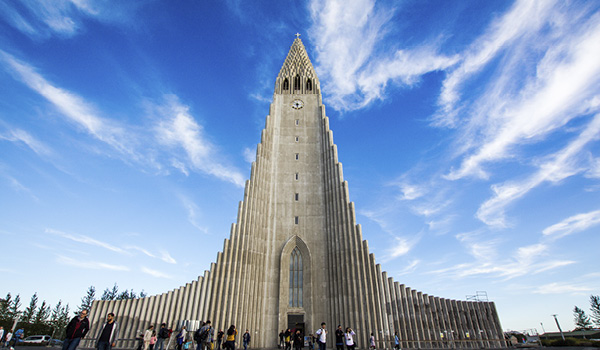
For anyone visiting Iceland's charming capital, a visit to Hallgrímskirkja is a must; it's probably the most important stop on any Reykjavík city sightseeing tour. If you have time to visit only one site in Reykjavík, make sure it's Hallgrímskirkja.
Find out more about the iconic church in our guide to Hallgrímskirkja.
The Saga Museum
The Saga Museum is even more kid-friendly, not least because they get the chance to dress up as Vikings at this Reykjavik city attraction. The stories of some of the most influential figures in Icelandic history are told here. Characters such as Ingólfur Árnason and Leif the Lucky had a huge impact on a young nation, bringing Norse traditions to this new land.
Key events in Reykjavik and Iceland’s past are also brought to life in the lifelike representations of people in authentically reproduced settings. The gruesome nature of the Black Death, for example, is likely to be a hit with many youngsters, though sensitive types might need to be reminded that life’s a lot less violent now.
The Settlement Exhibition
In a similar vein is The Settlement Exhibition, also located in downtown Reykjavik. This educational attraction is in two parts, one of which tells Reykjavik’s story. The other, a few doors down, takes a deep dive into the Viking era, using what’s been excavated of a 10th century Viking-era longhouse that was unearthed right on this very spot.
Kids will enjoy learning how to write their name in runes, and play around with vintage-style toys just as youngsters might have done around a thousand years ago. The interactive nature of the museum also extends to giving smaller visitors the chance to dress up as Vikings, which they’re certain to enjoy.
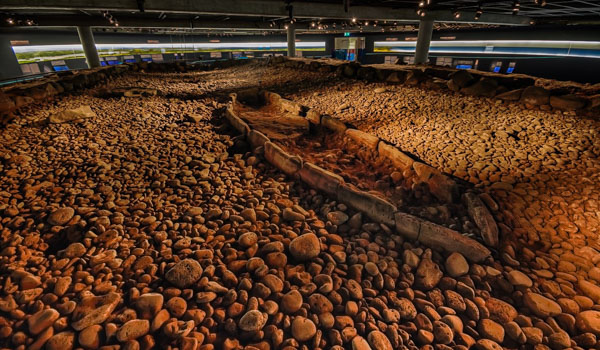
Reykjavik Maritime Museum
The city’s popular Hop On, Hop Off bus route makes reaching Reykjavik city attractions a piece of cake. At one of its downtown stops, Reykjavik Maritime Museum in the Old Harbour explores the Icelandic capital’s relationship with the sea. It’s entirely fitting that it occupies a building that was previously a fish freezing plant, demonstrating that this part of the city owes its existence to the water it abuts.
Its anchor exhibit is called Fish and Folk, and this explores how people have made a living from the ocean and also used what they could retrieve from it in myriad ways. The former Coast Guard Vessel Óðinn is a popular part of the museum; moored at the adjacent pier, guided tours enable visitors to step on board and learn its story.
Whales of Iceland
Vital statistics are all well and good but nothing beats seeing something with your own eyes to gain a true picture as you do when you visit Whales of Iceland . This mammoth museum contains 23 life-size models of the cetaceans that visit Icelandic waters. The attention to detail sets this place apart; anyone wanting to learn about their appearance, characteristic features and behaviour is in the right place.
No two whales are the same, not even those that are the same species. Here, as you look at and touch replica blue, sperm, humpback and killer whales, you’re actually looking at a model of an individual rather than something more generic. Ambient lighting and whale sounds add atmosphere, while informational videos provide context. This is definitely one Reykjavik Iceland attraction that you won’t want to miss.
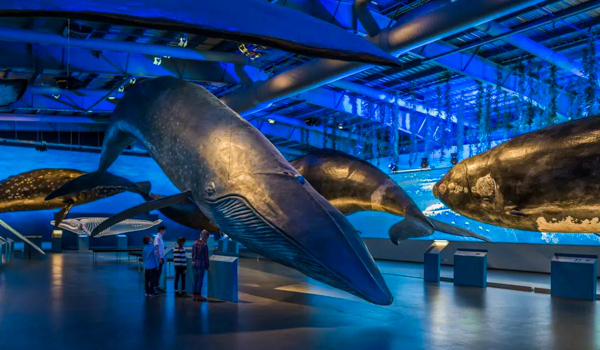
Lava Show
Few of us can say we’ve been close enough to an erupting volcano to feel the heat, but that’s precisely what you can do if you visit Lava Show . In a country that sits on two converging tectonic plates, this mesmerising multi-sensory experience is unique to Iceland and a must for anyone interested in magma.
In this innovative Reykjavik attraction, basaltic tephra is superheated to a temperature of around 1100°C (2000°F). As it is poured into the auditorium, you’ll hear audible gasps as guests start to appreciate this is what happens in a real volcanic eruption. As the lava flows over ice, it cools rapidly to form volcanic glass. Science lessons at school never managed quite this level of wow factor, so prepare to be impressed.
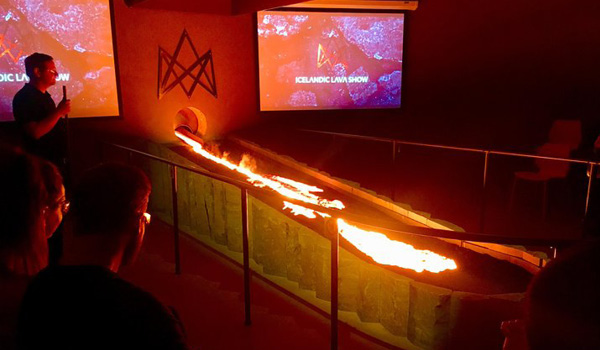
Aurora Reykjavik
The Northern Lights have fascinated people for centuries, giving rise to myths and folklore tales as they sought to explain a phenomenon they couldn’t fathom. Even though our understanding of science has come on in leaps and bounds, our knowledge of space is still evolving.
A visit to Aurora Reykjavik: Northern Lights Center is a must for anyone planning to go out looking for the aurora. Discover the science behind their formation, what gives rise to their various colours and why they often appear only fleetingly. Staff are on hand to answer questions and prep you for the real thing; they’ll even offer advice on how to snap a great souvenir photo when you set off on a tour
Perlan
If you’re looking for something hands-on, then Perlan is a great fit. Here you can immerse yourself in Iceland’s wondrous landscapes without even leaving the city. Science, nature, geology and geography are the main focus here. Watch jaw-dropping footage of the country’s recent volcanic eruptions and be spellbound by the dazzling aurora borealis in Perlan’s planetarium.
Find out why everyone should be concerned about global warming as you tour the glaciers exhibit; as you enter the walk-through artificial ice cave it’s hard not to be concerned about glacial retreat. Among the museum’s other exhibits are an augmented reality version of the Látrabjarg seabird cliffs, where you can learn about species such as puffins that come to Iceland to nest and rear their chicks. It’s not hard to see why this is consistently rated one of the best Reykjavik attractions.
A Guide to Perlan Museum in Reykjavík
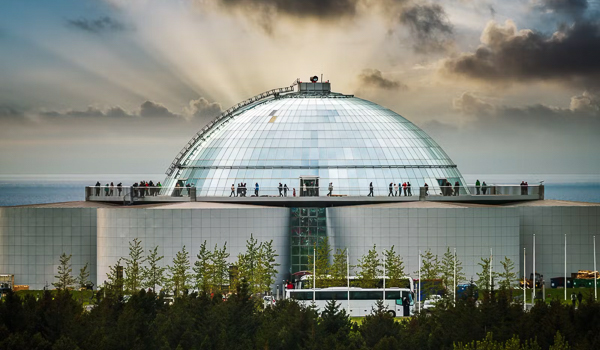
Perlan is a fascinating museum that provides exhibits on the natural wonders of Iceland and offers breathtaking panoramic views of Reykjavík and beyond from its famed observation deck.
For anyone visiting Iceland's charming capital, a visit to Perlan is a must; Find out more about the museum in our guide to Perlan.
Árbær Open Air Museum
Reykjavik’s tourist attractions extend out into the suburbs and that’s the case here, where Iceland’s social history is brought to life at Árbær Open Air Museum. More than twenty historic buildings rescued and relocated from Reykjavik city centre and beyond provide an insight into the past. You might wish to visit during the summer when staff don costumes to re-enact some of the things their Reykjavik ancestors might have done in the 19th and early 20th centuries.
Arranged to form a square, a village cluster and a tranche of countryside, they include Hansen’s House (the oldest of the collection), a smithy (Smiðshús), a granary dating from about 1820, a renovated sheep shed whose roof is made of driftwood and turf, a latticework shed of a kind that would have been used to dry fish and a shop that first stood on Laugavegur when it was constructed in 1901.
Höfði House
Höfði House is steeped in historical significance. Built in 1909, this house has hosted some of the most pivotal meetings in modern history, including the 1986 summit between presidents Ronald Reagan and Mikhail Gorbachev, which marked the beginning of the end of the Cold War.
Initially built for the French consul, Höfði has been used for various purposes over the years, including serving as the residence of the British Ambassador to Iceland. Today, Höfði House is owned by the city of Reykjavík and is used for official receptions and meetings. Its beautiful architecture and historical importance make it a popular tourist attraction.
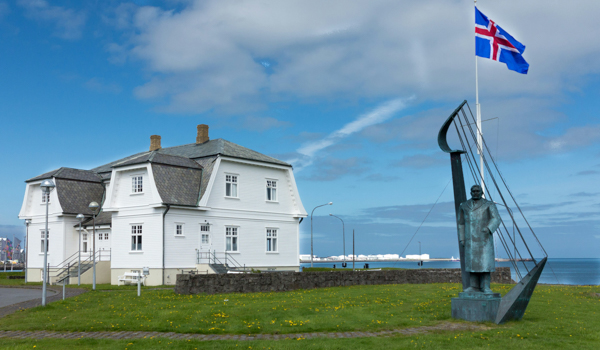
Child and Student Discounts
Many of Iceland’s educational attractions offer significant discounts on the admission price for children and for students carrying proof that they’re still in full-time education. At the National Museum of Iceland, for example, under 18s are admitted free of charge and students pay about half the price of an adult ticket.
It’s a similar story at the Reykjavik Maritime Museum. Under 18s pay nothing, while students are charged 1450 ISK on production of their student card, a saving of 900 ISK on the adult entry. Lava Show offers a lower ticket price to those aged 12 and under, though it advises that the nature of this educational attraction is less well suited to those under five.
Very small children can visit Perlan for free, while 6 to 17 year olds enjoy discounted admission; here a sizeable saving can be made with the purchase of a family ticket, which works out much cheaper than paying for two adults and two children. Whales of Iceland also offer a family ticket with similar cost-saving advantages. Under sixes get in without paying and as kids often learn through touch, they should really enjoy the interactive nature of this museum.
Your Guide to the Best Museums in Reykjavík

Reykjavík is a haven for nature lovers and a treasure trove for those seeking local culture. The capital city’s history museums are portals into the past, while Reykjavík art museums and galleries showcase Iceland’s contemporary brilliance.
Find out more about the iconic church in the Best Museums in Reykjavík.
The Best Time to Visit Reykjavik’s Educational Attractions
Most of the educational attractions that we’ve featured here are open year-round, so no matter when you plan to visit you’ll be able to incorporate them into your itinerary. On those occasions when the wind’s howling outside or it’s throwing it down with rain (sorry, it does happen!) they’re not only a welcome place to shelter from the elements but fantastically interesting in their own right.
However, Árbær Open Air Museum is a seasonal attraction. It opens between May and September with shorter visiting hours at the beginning and end of that period. In any case, you’re likely to ge the most out of the museum’s exhibits if you visit during the warmer months as you’ll be spending a proportion of your time there outside.
Booking these city attractions is straightforward, either via our Reykjavik tour page or on the museums’ own websites. If you have a few days in Reykjavik at the start of your trip and are planning on seeing more of the country, visiting will help you make sense of the landscapes and landforms you’ll see. It’s reason enough to add them to your itinerary, but regardless, they’re as fun as they are informative, so immersing yourself in their exhibits is sure to be a highlight of your trip. Forget boring old school: learning while you’re travelling is definitely the way to go.
Questions and Answers about Educational Attractions in Reykjavík
Are museums free in Reykjavik? Museums in Reykjavik are not typically free; most charge an admission fee, but there are occasional free entry days or times.
What are some must-visit educational attractions for families in Reykjavík A: Key attractions include the Perlan with its interactive exhibitions on Icelandic nature, the National Museum of Iceland for a journey through the country’s history, and the Whales of Iceland exhibit, which brings marine life to life with life-sized models and immersive displays. The Árbaer Open Air Museum also offers a glimpse into Iceland’s past through reconstructed historical buildings.
Are there educational activities suitable for young children? Absolutely! The Whales of Iceland exhibit is visually captivating for younger children, while the Reykjavík Maritime Museum features hands-on displays. The Tales from Iceland multimedia exhibition uses engaging videos to introduce Iceland’s culture and nature in a way that resonates with kids.
Is the content at these museums and exhibitions available in English? Yes, most educational attractions in Reykjavík provide content in English, including audio guides, written displays, and interactive exhibits, making it easy for non-Icelandic speakers to fully engage.
What’s the best time of year to visit educational attractions in Reykjavík Attractions are open year-round, but visiting during the off-season (autumn to spring) can mean fewer crowds. Many attractions also host seasonal events or temporary exhibitions that provide unique learning opportunities.
Are there dining options near these educational attractions? Reykjavík offers a range of family-friendly restaurants and cafes close to major attractions. The Perlan features a revolving restaurant with stunning views, while the city center offers plenty of options near museums.
Is Perlan Iceland worth it? Many visitors consider Perlan worth it for its unique exhibitions on Icelandic nature, fantastic viewing deck with 360° panoramic views of Reykjavik, northern lights show, and innovative Ice Cave experience.
Is the National Museum of Iceland worth it? The National Museum of Iceland is worth visiting for its comprehensive display of Icelandic artefacts and cultural history, offering insights into the country’s Viking past and modern development.
How long do you spend in Perlan? Visitors usually spend 1 to 2 hours in Perlan, depending on interest in the exhibitions and time spent at the observation deck.
Is the ice cave at Perlan real? The ice cave at Perlan is not a natural ice cave but a man-made replica designed to mimic the experience of walking through a natural Icelandic glacier cave.
Do you have to pre-book the Perlan Museum? While it’s not always mandatory to pre-book the Perlan Museum, it’s highly recommended, especially during peak tourist season, to ensure entry and avoid long waits.
How long is the Aurora show in Perlan? The Aurora show at Perlan is approximately 15-20 minutes long, showcasing stunning visuals of the Northern Lights in an immersive planetarium setting.
Is Hop-on Hop-off worth it in Reykjavik? The hop-on hop-off tour in Reykjavik is worth it for those looking to explore the city’s major attractions at their own pace. It offers flexibility and convenience, especially for visiting various museums.
Is it easy to get around Reykjavik without a car? It’s relatively easy to get around Reykjavik without a car, thanks to its compact size, walkable city centre, efficient public transportation system, and tours like the Hop-on Hop-off bus.
Tours in the spotlight
REYKJAVIK EXCURSIONS BLOG
Get inspired! Information and tips and must see places in Iceland, fun facts, customs and more.
The Silver Circle of West Iceland - Your Guide
You’ve heard of the Golden Circle, but here’s why you should head to Iceland’s western region to explore the msytical Silver Circle tour route.
Read BlogEducational Attractions in Reykjavik
Explore Iceland’s rich cultural and natural heritage, artistry, and ingenuity
December 30, 2024
Educational Attractions in Reykjavik
Explore Iceland’s rich cultural and natural heritage, artistry, and ingenuity
December 30, 2024
If you’re travelling with children, using the word education when they aren’t in school can lead to vehement protests – that is, however, until they come to Iceland. Families keen to instil a lifelong love of subjects such as geography, science, history and culture should consider broadening their kids’ horizons here. In fact, no matter what your age, you’ll learn something here.
In this guide, we’ll take a look at the educational attractions on offer in Reykjavik that will enrich the understanding of children and adults alike. Along with practical tips on the best times to visit and suggestions for nearby dining options, we’ll show you how to book and offer advice about incorporating these educational experiences into a broader travel itinerary in Iceland. We can promise you: learning has never been so much fun – here’s why.
Reykjavik Educational Attractions You Can’t Miss
The National Museum of Iceland
Iceland’s settled history can be traced back to the 9th century and to understand some of the events of the past helps today’s tourists to gain an extra dimension on what they visit as they venture elsewhere in the country. Imagine, for example, what you would lose from a visit to Thingvellir National Park if you had no knowledge of the Althing and why it convened.
The main permanent exhibit at this rewarding museum is called the Making of a Nation, and traces events from the Viking Era to the present day. Around 2000 carefully curated artefacts as well as a thousand or more photographs help bring these events to life. The museum has a family room which can be used not only by school groups but also individual visitors.
Hallgrímskirkja
Hallgrímskirkja is one of Reykjavík’s most iconic landmarks. Towering over the city, this Lutheran church is named after the Icelandic poet and clergyman Hallgrímur Pétursson. Designed by the state architect Guðjón Samúelsson in 1937, its construction began in 1945 and took 41 years to complete. The church’s architecture is a modernist wonder, reminiscent of the Icelandic landscapes, mainly the basalt lava flows commonly found in the country’s rugged terrain.
Standing at 74.5 metres, it is one of the tallest structures in Iceland. Visitors can take an elevator to the observation tower to enjoy panoramic views of the city and the surrounding mountains. The church is also home to a large pipe organ by the German organ builder Johannes Klais, which stands an impressive 15 metres tall and contains 5,275 pipes.
A Visitor's Guide to Hallgrímskirkja

For anyone visiting Iceland's charming capital, a visit to Hallgrímskirkja is a must; it's probably the most important stop on any Reykjavík city sightseeing tour. If you have time to visit only one site in Reykjavík, make sure it's Hallgrímskirkja.
Find out more about the iconic church in our guide to Hallgrímskirkja.
The Saga Museum
The Saga Museum is even more kid-friendly, not least because they get the chance to dress up as Vikings at this Reykjavik city attraction. The stories of some of the most influential figures in Icelandic history are told here. Characters such as Ingólfur Árnason and Leif the Lucky had a huge impact on a young nation, bringing Norse traditions to this new land.
Key events in Reykjavik and Iceland’s past are also brought to life in the lifelike representations of people in authentically reproduced settings. The gruesome nature of the Black Death, for example, is likely to be a hit with many youngsters, though sensitive types might need to be reminded that life’s a lot less violent now.
The Settlement Exhibition
In a similar vein is The Settlement Exhibition, also located in downtown Reykjavik. This educational attraction is in two parts, one of which tells Reykjavik’s story. The other, a few doors down, takes a deep dive into the Viking era, using what’s been excavated of a 10th century Viking-era longhouse that was unearthed right on this very spot.
Kids will enjoy learning how to write their name in runes, and play around with vintage-style toys just as youngsters might have done around a thousand years ago. The interactive nature of the museum also extends to giving smaller visitors the chance to dress up as Vikings, which they’re certain to enjoy.

Reykjavik Maritime Museum
The city’s popular Hop On, Hop Off bus route makes reaching Reykjavik city attractions a piece of cake. At one of its downtown stops, Reykjavik Maritime Museum in the Old Harbour explores the Icelandic capital’s relationship with the sea. It’s entirely fitting that it occupies a building that was previously a fish freezing plant, demonstrating that this part of the city owes its existence to the water it abuts.
Its anchor exhibit is called Fish and Folk, and this explores how people have made a living from the ocean and also used what they could retrieve from it in myriad ways. The former Coast Guard Vessel Óðinn is a popular part of the museum; moored at the adjacent pier, guided tours enable visitors to step on board and learn its story.
Whales of Iceland
Vital statistics are all well and good but nothing beats seeing something with your own eyes to gain a true picture as you do when you visit Whales of Iceland . This mammoth museum contains 23 life-size models of the cetaceans that visit Icelandic waters. The attention to detail sets this place apart; anyone wanting to learn about their appearance, characteristic features and behaviour is in the right place.
No two whales are the same, not even those that are the same species. Here, as you look at and touch replica blue, sperm, humpback and killer whales, you’re actually looking at a model of an individual rather than something more generic. Ambient lighting and whale sounds add atmosphere, while informational videos provide context. This is definitely one Reykjavik Iceland attraction that you won’t want to miss.

Lava Show
Few of us can say we’ve been close enough to an erupting volcano to feel the heat, but that’s precisely what you can do if you visit Lava Show . In a country that sits on two converging tectonic plates, this mesmerising multi-sensory experience is unique to Iceland and a must for anyone interested in magma.
In this innovative Reykjavik attraction, basaltic tephra is superheated to a temperature of around 1100°C (2000°F). As it is poured into the auditorium, you’ll hear audible gasps as guests start to appreciate this is what happens in a real volcanic eruption. As the lava flows over ice, it cools rapidly to form volcanic glass. Science lessons at school never managed quite this level of wow factor, so prepare to be impressed.

Aurora Reykjavik
The Northern Lights have fascinated people for centuries, giving rise to myths and folklore tales as they sought to explain a phenomenon they couldn’t fathom. Even though our understanding of science has come on in leaps and bounds, our knowledge of space is still evolving.
A visit to Aurora Reykjavik: Northern Lights Center is a must for anyone planning to go out looking for the aurora. Discover the science behind their formation, what gives rise to their various colours and why they often appear only fleetingly. Staff are on hand to answer questions and prep you for the real thing; they’ll even offer advice on how to snap a great souvenir photo when you set off on a tour
Perlan
If you’re looking for something hands-on, then Perlan is a great fit. Here you can immerse yourself in Iceland’s wondrous landscapes without even leaving the city. Science, nature, geology and geography are the main focus here. Watch jaw-dropping footage of the country’s recent volcanic eruptions and be spellbound by the dazzling aurora borealis in Perlan’s planetarium.
Find out why everyone should be concerned about global warming as you tour the glaciers exhibit; as you enter the walk-through artificial ice cave it’s hard not to be concerned about glacial retreat. Among the museum’s other exhibits are an augmented reality version of the Látrabjarg seabird cliffs, where you can learn about species such as puffins that come to Iceland to nest and rear their chicks. It’s not hard to see why this is consistently rated one of the best Reykjavik attractions.
A Guide to Perlan Museum in Reykjavík

Perlan is a fascinating museum that provides exhibits on the natural wonders of Iceland and offers breathtaking panoramic views of Reykjavík and beyond from its famed observation deck.
For anyone visiting Iceland's charming capital, a visit to Perlan is a must; Find out more about the museum in our guide to Perlan.
Árbær Open Air Museum
Reykjavik’s tourist attractions extend out into the suburbs and that’s the case here, where Iceland’s social history is brought to life at Árbær Open Air Museum. More than twenty historic buildings rescued and relocated from Reykjavik city centre and beyond provide an insight into the past. You might wish to visit during the summer when staff don costumes to re-enact some of the things their Reykjavik ancestors might have done in the 19th and early 20th centuries.
Arranged to form a square, a village cluster and a tranche of countryside, they include Hansen’s House (the oldest of the collection), a smithy (Smiðshús), a granary dating from about 1820, a renovated sheep shed whose roof is made of driftwood and turf, a latticework shed of a kind that would have been used to dry fish and a shop that first stood on Laugavegur when it was constructed in 1901.
Höfði House
Höfði House is steeped in historical significance. Built in 1909, this house has hosted some of the most pivotal meetings in modern history, including the 1986 summit between presidents Ronald Reagan and Mikhail Gorbachev, which marked the beginning of the end of the Cold War.
Initially built for the French consul, Höfði has been used for various purposes over the years, including serving as the residence of the British Ambassador to Iceland. Today, Höfði House is owned by the city of Reykjavík and is used for official receptions and meetings. Its beautiful architecture and historical importance make it a popular tourist attraction.

Child and Student Discounts
Many of Iceland’s educational attractions offer significant discounts on the admission price for children and for students carrying proof that they’re still in full-time education. At the National Museum of Iceland, for example, under 18s are admitted free of charge and students pay about half the price of an adult ticket.
It’s a similar story at the Reykjavik Maritime Museum. Under 18s pay nothing, while students are charged 1450 ISK on production of their student card, a saving of 900 ISK on the adult entry. Lava Show offers a lower ticket price to those aged 12 and under, though it advises that the nature of this educational attraction is less well suited to those under five.
Very small children can visit Perlan for free, while 6 to 17 year olds enjoy discounted admission; here a sizeable saving can be made with the purchase of a family ticket, which works out much cheaper than paying for two adults and two children. Whales of Iceland also offer a family ticket with similar cost-saving advantages. Under sixes get in without paying and as kids often learn through touch, they should really enjoy the interactive nature of this museum.
Your Guide to the Best Museums in Reykjavík

Reykjavík is a haven for nature lovers and a treasure trove for those seeking local culture. The capital city’s history museums are portals into the past, while Reykjavík art museums and galleries showcase Iceland’s contemporary brilliance.
Find out more about the iconic church in the Best Museums in Reykjavík.
The Best Time to Visit Reykjavik’s Educational Attractions
Most of the educational attractions that we’ve featured here are open year-round, so no matter when you plan to visit you’ll be able to incorporate them into your itinerary. On those occasions when the wind’s howling outside or it’s throwing it down with rain (sorry, it does happen!) they’re not only a welcome place to shelter from the elements but fantastically interesting in their own right.
However, Árbær Open Air Museum is a seasonal attraction. It opens between May and September with shorter visiting hours at the beginning and end of that period. In any case, you’re likely to ge the most out of the museum’s exhibits if you visit during the warmer months as you’ll be spending a proportion of your time there outside.
Booking these city attractions is straightforward, either via our Reykjavik tour page or on the museums’ own websites. If you have a few days in Reykjavik at the start of your trip and are planning on seeing more of the country, visiting will help you make sense of the landscapes and landforms you’ll see. It’s reason enough to add them to your itinerary, but regardless, they’re as fun as they are informative, so immersing yourself in their exhibits is sure to be a highlight of your trip. Forget boring old school: learning while you’re travelling is definitely the way to go.
Questions and Answers about Educational Attractions in Reykjavík
Are museums free in Reykjavik? Museums in Reykjavik are not typically free; most charge an admission fee, but there are occasional free entry days or times.
What are some must-visit educational attractions for families in Reykjavík A: Key attractions include the Perlan with its interactive exhibitions on Icelandic nature, the National Museum of Iceland for a journey through the country’s history, and the Whales of Iceland exhibit, which brings marine life to life with life-sized models and immersive displays. The Árbaer Open Air Museum also offers a glimpse into Iceland’s past through reconstructed historical buildings.
Are there educational activities suitable for young children? Absolutely! The Whales of Iceland exhibit is visually captivating for younger children, while the Reykjavík Maritime Museum features hands-on displays. The Tales from Iceland multimedia exhibition uses engaging videos to introduce Iceland’s culture and nature in a way that resonates with kids.
Is the content at these museums and exhibitions available in English? Yes, most educational attractions in Reykjavík provide content in English, including audio guides, written displays, and interactive exhibits, making it easy for non-Icelandic speakers to fully engage.
What’s the best time of year to visit educational attractions in Reykjavík Attractions are open year-round, but visiting during the off-season (autumn to spring) can mean fewer crowds. Many attractions also host seasonal events or temporary exhibitions that provide unique learning opportunities.
Are there dining options near these educational attractions? Reykjavík offers a range of family-friendly restaurants and cafes close to major attractions. The Perlan features a revolving restaurant with stunning views, while the city center offers plenty of options near museums.
Is Perlan Iceland worth it? Many visitors consider Perlan worth it for its unique exhibitions on Icelandic nature, fantastic viewing deck with 360° panoramic views of Reykjavik, northern lights show, and innovative Ice Cave experience.
Is the National Museum of Iceland worth it? The National Museum of Iceland is worth visiting for its comprehensive display of Icelandic artefacts and cultural history, offering insights into the country’s Viking past and modern development.
How long do you spend in Perlan? Visitors usually spend 1 to 2 hours in Perlan, depending on interest in the exhibitions and time spent at the observation deck.
Is the ice cave at Perlan real? The ice cave at Perlan is not a natural ice cave but a man-made replica designed to mimic the experience of walking through a natural Icelandic glacier cave.
Do you have to pre-book the Perlan Museum? While it’s not always mandatory to pre-book the Perlan Museum, it’s highly recommended, especially during peak tourist season, to ensure entry and avoid long waits.
How long is the Aurora show in Perlan? The Aurora show at Perlan is approximately 15-20 minutes long, showcasing stunning visuals of the Northern Lights in an immersive planetarium setting.
Is Hop-on Hop-off worth it in Reykjavik? The hop-on hop-off tour in Reykjavik is worth it for those looking to explore the city’s major attractions at their own pace. It offers flexibility and convenience, especially for visiting various museums.
Is it easy to get around Reykjavik without a car? It’s relatively easy to get around Reykjavik without a car, thanks to its compact size, walkable city centre, efficient public transportation system, and tours like the Hop-on Hop-off bus.
Tours in the spotlight
REYKJAVIK EXCURSIONS BLOG
Get inspired! Information and tips and must see places in Iceland, fun facts, customs and more.
The Silver Circle of West Iceland - Your Guide
You’ve heard of the Golden Circle, but here’s why you should head to Iceland’s western region to explore the msytical Silver Circle tour route.
Read Blog